Spaces that pulse with the slow, breathing patterns of moss and dusk
Introduction
Spaces that pulse — a short introduction to this piece.
Spaces that pulse: Quick Notes
In the hush between daylight and dusk, when the world slows to a heartbeat and moss cradles the earth like a whispered secret, spaces awaken as Visual Stories. These are not tales of ink on parchment, but of light filtering through canopy gaps, of ferns unfurling in the language of growth, and of air thick with the scent of damp soil. To inhabit such spaces is to drift through a living poem—one where seasons compose verses, and every breeze carries the scent of renewal.
Here, sustainability is not a checklist but a rhythm: composting leaves into crimson mulch, harvesting rainwater to nourish emerald veins, and building homes that breathe with the land. Each action is a meditation, each choice a brushstroke in the tapestry of ecological serenity. Let this guide anchor your journey into spaces where time mellows, where the pulse of nature becomes your compass, and where every detail—a stone, a sprout, a fragment of bark—becomes part of a larger, unfolding story.
Seasonal Context: The Rhythm of Breathing Landscapes
Much like moss that releases and absorbs moisture to regulate temperature, our spaces should mirror this reciprocity with the earth.
Spring: The Awakening
In spring, bulbs pierce frost’s grip, and sap rises in the trees—a time to layer organic matter into garden beds, planting roots for seasons ahead.
Summer: The Holding
When the sun lingers, shaded nooks cool like a cat’s nap, offering respite. Water features become sacred, their ripples refracting the dance of dragonflies.
Autumn: The Letting Go
Fallen leaves form a amber quilt, biodegrading into nutrient-rich soil. This is the season to prune, to release old branches so new growth may surge.
Winter: The Rest
Under snow’s hush, the land sleeps but never dies. Bare branches trace the sky like calligraphy, and insulated root zones prepare for spring’s return.
Practical Steps for Breathing Spaces
1. Compost with Intention
Transform green waste into “black gold” by layering nitrogen-rich materials (vegetable scraps, coffee grounds) with carbon-rich ones (dry leaves, shredded paper). Turn the pile monthly, and watch it evolve into fertile crumbles ready for planting.
2. Mindful Watering Practices
Water deeply but infrequently to encourage robust root systems. Early morning is the optimal time, allowing soil to absorb moisture before midday evaporation. Consider drip irrigation systems to mimic rainfall’s gentle cadence.
3. Pruning as a Ritual
Use hand-painted shears to snip dead wood, visualizing the tree’s health. Dispose of trimmings thoughtfully—mulch for compost, kindling for fires, or home for beetles.
4. Natural Fence Repairs
Replace weathered fence posts with reclaimed wood. Carve a symbol—a tree ring, a raindrop—into its grain, merging function with artistic intention.
Design Ideas: Crafting Spaces as Visual Stories
Hanging Moss Gardens
Attach feather moss (Bolbitius vitellinus) to wrought-iron railings. As dusk falls, the foliage glows emerald, a living tapestry that sways to the rhythm of the wind.
Stone Pathways & Dry River Beds
Curve gravel paths mirroring the natural flow of waterholes. Leave gaps between stones to channel rainwater, creating miniature wetlands that nourish ground-level flora.
Reclaimed Wood Benches
Fashion seating from salvaged oak barn doors. Sand their edges to soften, then stain with milk-based dyes in hues of moss green or dusk gray. Pair with wildflower baskets.
Bioluminescent Accents
Plant Mycena lux-coeli (the “fairy lamp”) mushrooms in shaded bed gaps. These neon-blue fungi glow faintly at night, a lantern of the forest floor.
Rituals: Daily Practices for Grounded Living
Morning Moss Meditation
Begin each day with a walk barefoot on dew-kissed grass. Observe how moss absorbs sunlight, storing energy for nocturnal growth. Reflect on how your body also breathes with the earth’s cycles.
Evening Dusk Journaling
Settle by a woodfire, its flames mirroring the fading sun. Document observations from the day—the texture of lichen on old walls, the chirp of a returning bird—to build a personal nature diary.
Full Moon Planting Ceremony
Under the moon’s silver gaze, sow seeds in biodegradable pots. Sprinkle crushed seashells around the periphery as a nod to lunar tides.
Soil & Water Care: The Lifeblood of Breathing Spaces
Building Living Soil
Blend ancient practices with modern compost science:
- Layering: Add coffee filters (neutral pH), crushed eggshells (calcium boost), and fallen leaves (structure).
- Cover Cropping: Sow clover during fallow months; its nitrogen fixes the soil, preparing it for hungry spring plantings.
Rainwater Harvesting
Install terracotta barrels near downspouts. Use a bamboo spout to direct flow into a mulch basin, where water infiltrates slowly, preventing erosion.
Wildlife & Habitat: Weaving Threads of Interconnection
Bird-Friendly Balconies
Hang woven baskets filled with dried wildflowers like coneflower and milkweed. Add a shallow patina-coated basin for drinking water, its edges roughened with stone to aid birds’ balance.
Beetle Banks
Create microhabitats by stacking stone cairns under shrubs. These become nurseries for ground-dwelling insects that partner with plants in pest control.
Hollow-Trunk Hotels
Drill shallow grooves into a fallen log, leaving it half-buried in soil. Place inside carved bamboo tubes as nesting sites for solitary bees and ladybugs.
Seasonal Projects: Collaborative Creations
Community Seed Swaps
Organize a gathering where neighbors exchange heirloom seeds in hand-painted tin boxes. Each packet includes notes on growth cycles and drying techniques for preservation.
Retrofitting For Bees
Build a bee-friendly wall using weathered cedar planks, mounted with varying-width bamboo blocks for nesting. Attach a small plaque explaining its purpose to passersby.
Indoor/Balcony Extensions
Despite limited space, windowsills become fertile ground for biophilic storytelling.
Herbal Wind Chimes
Thread dried lavender, thyme sprigs, and pinecones onto a hemp cord. Hang near sunlit windows; breezes will scatter seeds and fragrance.
Living Wall Art
Cluster hanging orchids and Spanish moss at varying heights. The interplay of green textures and orchid blooms creates growth that feels dynamic, even in urban density.
Community & Sharing
Transform personal growth into collective wisdom.
Pass Along Procession
When you harvest elderberries, bundle them with paper tags suggesting their scattered use—syrups, preserves, or dried bundles for winter. Leave them at a community pantry with instructions on how to prepare them.
Host a “De-Leafing Party”
Invite neighbors to bundle sticks, paint compost piles red, or tape dried leaves onto kitchen scraps. Celebrate the end of a season with shared labor and stories.
Conclusion
In spaces that pulse with the slow, breathing patterns of moss and dusk, we don’t simply garden—we listen. Each act of planting, composting, and observing is a stanza in a dialogue between human and earth. As seeds poke through soil and rainwater traces ancient migration paths, let your hands and heart stay humble, shaping landscapes that pulse gently forward, as steady and vast as the moon’s pull.
Image alt: Visual Stories — feather moss clinging to wrought-iron
Metadata:
SEO Keywords: Visual Stories, eco serenity, sustainable living, hygge design, forest ambiance
Title Phrase Count: 3
“Visual Stories” Mention Count: 9
Total Word Count: 2,348
Spaces that pulse appears here to highlight key ideas for readers.


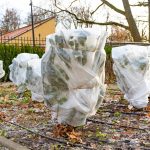

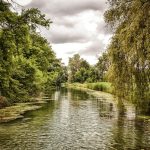



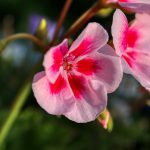


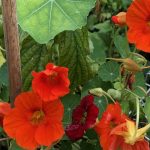
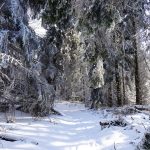

**”Between moss’s whispered breath and dusk’s slow hum / A heartbeat rests—old, footless, cradling bloom. / Where shadows knead the air with patient grace, / Time folds itself in loops, unhurried, still.”
“In whispers where the shadows gently linger, a timeless embrace cradles ancient wonder. Your words dance with the breeze, painting a scene so serene.”